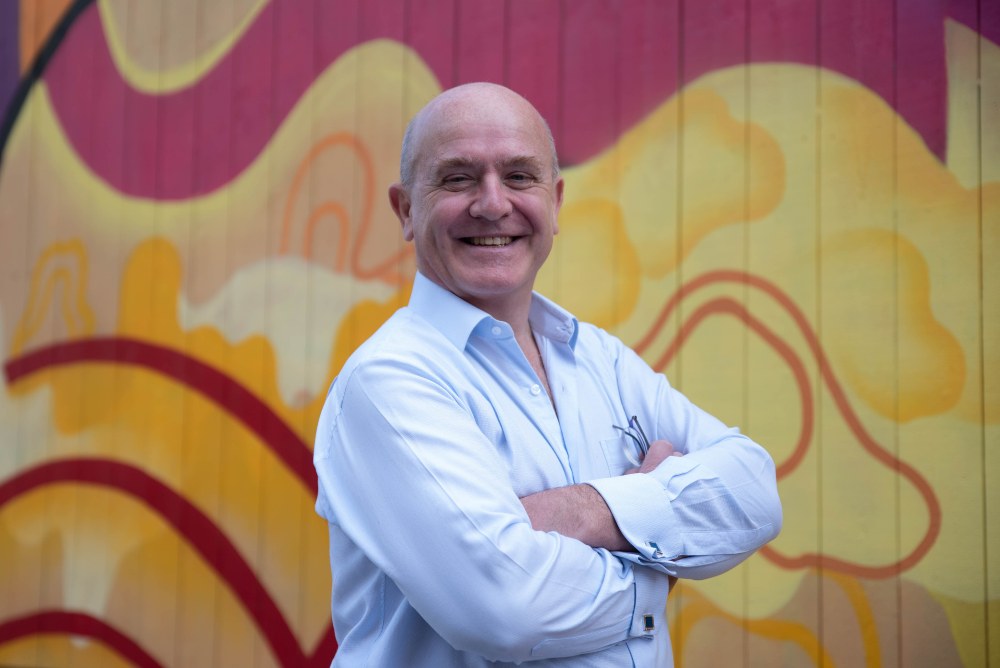As we gain distance from the acute crisis phase of the pandemic, the health sector continues to adjust towards a new equilibrium, notes Bank of Ireland head of Health Sector Gráinne Henson in her Health 2022 Insights and 2023 Outlook.
“The pandemic highlighted beyond doubt the need for enhanced cooperation and collaboration between the private sector, the HSE and the Department of Health”
Summary
In a month or so, we will mark the third anniversary of the start of the pandemic and many in health services will recall the collective trauma of Spring 2020. As we gain distance from the acute crisis phase of the pandemic, the health sector continues to adjust towards a new equilibrium. One of the many lessons of the pandemic is a reminder that we would do well to consider the health care system as a complex, interdependent and ever-evolving ecosystem. Whilst 2022 was an extremely challenging year for the sector – innovation, collaboration and sustainability will be key to success in 2023.
Trends & Insights
Demographics & Demand
- Ireland’s population is now 5.1 million, an increase in 7.6% in a six-year period. In addition, latest figures show in excess of 67,000 Ukrainian persons now accommodated here. This, coupled with the ‘tripledemic’ of flu, COVID-19 and RSV, has put unprecedented demand on our healthcare system. With an ageing population comes increased demand for both acute and chronic services. Within this population, dementia is also presenting as one of the greatest health challenges.
- Concern in 2022 focused on the capacity of public services and the current need to ease pressure on the HSE. This presented private sector opportunities, such as utilising capacity in private hospitals and private nursing homes and an increased role for community pharmacists in vaccinations and women’s health.
Changing Landscape
- 2022 saw further consolidation throughout the sector and a lot of transactional activity. It also saw 11 independent nursing homes close their doors or leave the Fair Deal scheme, the average size being 30 beds. Four new homes opened on Greenfield sites in Cork, Dublin, Meath and Louth, with an average size of 112 beds3. These were all nursing home groups, three being Silver Stream Healthcare with the other being Virtue Integrated Elder Care.
- The nursing home market has continued to attract new private equity and REIT entrants with a continued trend of the ‘OpCo /PropCo’ structure, separating the operating company (OpCo) from the property company (PropCo).
- Last year saw a decline in the volume of nursing home transactions, with 18 transactions recording pricing of around €440m, compared to 25 transactions totalling approximately €630m in 20214. The majority of transactions had an element of ‘investment’, whether by way of a sale and leaseback or an OpCo/ PropCo split of a Going Concern transaction. The consolidation trend looks set to continue, although at a reduced rate compared to previous years as much of the good quality, future proofed stock has already been acquired.
- We also have seen the development of Céile Care, a nationwide network of eighteen independent Nursing Homes working together to benefit from economies of scale, shared operational and governance services, and support with HSE tendering processes.
- With 14 pharmacy closures and 12 new businesses opened, 2022 represented a break in the post-deregulation trend of year-on-year increases in community pharmacy businesses.
- Recently published analysis of 2019/2020 data suggests current market saturation with more than half of the closures in the period were of new pharmacy businesses with the majority closing within five years of opening.
- 2022 saw thirty pharmacy transactions with independent and symbol businesses accounting for 96%.
Staffing
- The low 4.3% unemployment rate7contributed to a tight labour market in 2022, with health identified as one of the sectors with the highest employment growth. The health sector experienced high staff attrition rates due to burnout, with private nursing homes losing staff trained within the sector to HSE services.
- Staffing has also been a major headwind for community pharmacies. With a growing shortage of Pharmacists and a reliance on expensive locum cover, staff costs accounted for a significant proportion of gross profit margin reductions.
- Reports have indicated that it can take up to five months on average to fill a vacant position. These shortages have resulted in some pharmacies having to alter their opening hours, resulting in reduced services in some locations. Others have offered innovative solutions such as profit share or equity share options to upcoming pharmacists.
- Although 2022 saw ‘Pharmacists’ being added to the Critical Skills Occupation List, the Irish Pharmacy Union expressed deep disappointment that there were no extra third level places offered for the 2022 academic year.
Costs, Funding & Margins
- Inflation and interest rises, coupled with soaring energy prices, have seen operational cost increases across the board in the health sector. Government financial supports have helped businesses absorb an element of these costs and larger companies have been better able to withstand the squeeze to profit margins.
- Over recent months, nursing homes have been seen to receive a larger than average increase in their National Treatment Purchase Fund (NTPF/Fair Deal) rate, with average increases of 3.53%, compared to a national average of 2.87% in the previous year. These rises however do not match inflation. Nursing Homes Ireland (NHI) has launched a formal complaint to EU competition officials regarding a 62% difference in funding rates between HSE Community Hospitals and private nursing home facilities, considered by NHI to be like-for-like services.
- Irish community pharmacies have been beset by severe supply chain issues linked to global shortages in medicines and national funding structures. As well as the evident risk to patient safety, this adds an administrative burden and results in additional operational cost increases. Coupled with legacy cuts to the fees pharmacists can charge (average €4.74 per item) the costs have contributed to squeezed margins. The Irish Pharmacy Union (IPU) has called for increases to fees in 2023.
- Pharmacists are limited in how they can respond to increased costs, with some investing in robotics and digitalisation to improve efficiency.
Outlook 2023
- Further strong headwinds seem inevitable in 2023, with macroeconomic uncertainty and inflationary pressures likely to persist. The pace of growth is set to moderate, with the OECD predicting less than 1% growth in the Irish economy. However, the increasing population trend will also continue, with the number of over 65-year-olds growing faster than any other age group and predicted to double to 1.6 million by 2051. Healthcare is non- cyclical, and our growing and ageing population will always require health services. There are multiple opportunities for nursing homes and pharmacies to develop and future-proof their businesses, whether it is nursing homes looking at extending or reconfiguring their facilities, or pharmacies looking to invest in patient consultation rooms, robotics or upgrading their premises.
- Staffing will be the single biggest challenge across the health service. The introduction of mandatory sick pay, auto enrolment into a pension scheme, an extra bank holiday and an 80c increase to the minimum wage will all contribute to increased staffing costs.
- A pay rise to public health sector workers is likely to attract more staff from the private sector.
- The current shortage of pharmacists will remain a major issue, with locum pharmacists able to earn in three days what a full-time staff member can earn in a week. Healthcare businesses will need to focus more than ever on staff satisfaction and retention.
- My assessment is that companies who invest wisely in the areas of sustainability, collaboration and digitalisation will best weather the headwinds. With wage inflation, higher costs for supplies and increases in capital costs also set to continue, innovation in key areas will be rewarded.
Sustainability
- Globally, healthcare’s climate footprint is equivalent to 4.4% of net emissions. The energy crisis has seen businesses start to invest in energy efficiency technologies such as heat pumps and solar panels, the latter of which are now exempt from requiring planning permission. While some health companies in Ireland have been proactive in signing up to independent oversight/certification by companies such as Ecomerit, the sector is considered to have been slow in responding to the government’s Climate Action Plan.
- Sustainability will no longer be an aspiration but a priority requirement, as disclosure of ESG performance indicators becomes obligatory under the Corporate Sustainability Reporting Directive (CSRD). Transition within the sector will necessitate a range of measures, such as ensuring healthcare is powered with clean renewable energy, zero emissions buildings, low-carbon pharmaceuticals and circular healthcare waste management systems.
- The Climate Action Plan comes with resources such as the climate toolkit for businesses and carbon calculator for SMEs together with the availability of various grants via SEAI. The SBCI also operates an Energy Efficiency Loan Scheme17 aimed at enabling SMEs to invest in the energy efficiency of their business.
- The healthcare industry can reduce its emissions without compromising patient safety or quality of care and helping the bottom line.
Collaboration
- The pandemic highlighted beyond doubt the need for enhanced cooperation and collaboration between the private sector, the HSE and the Department of Health. Consumer research indicates public support for a joint approach between the public and private systems in tackling the big challenges of waiting lists and capacity18.
- There is potential for nursing home operators to diversify, securing HSE agreements with enhanced weekly rates. For example, nursing homes with development potential and situated near an acute hospital could be ideally placed to accept patients requiring transitional care. Similarly, with GPs under workload pressure, linked to a reported 42% deficit in GP numbers in Ireland, the IPU are campaigning for regulatory changes which would increase opportunities for pharmacists to widen their clinical scope of practice, such as prescribing for minor ailments.
Health Sector 2022 Insights and 2023 Outlook
View
Print





